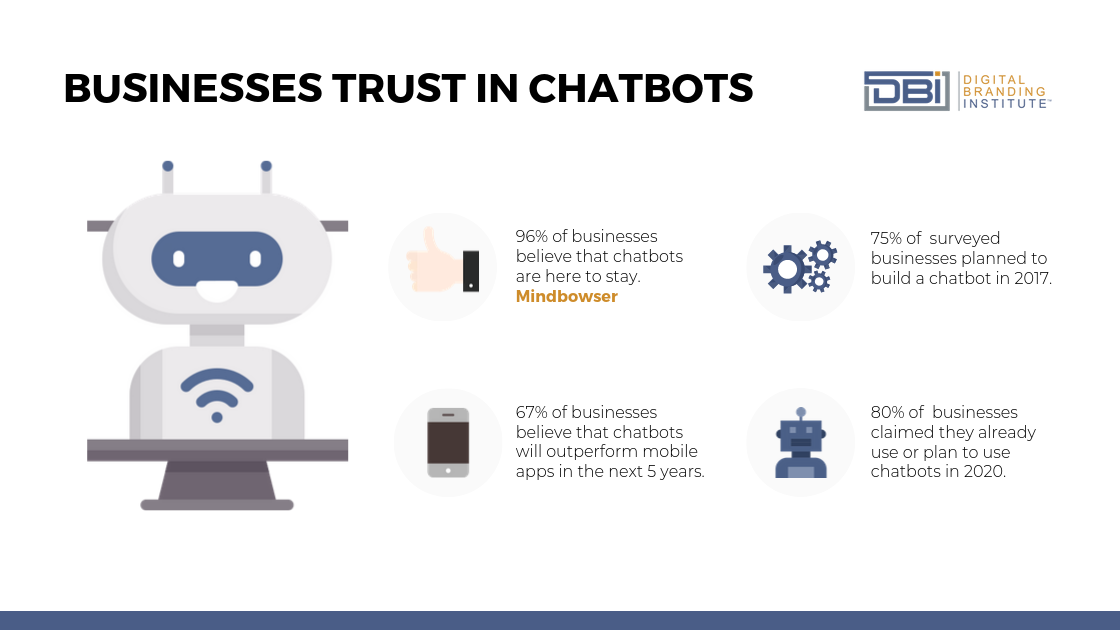With technological advances come buzz and excitement. In the early days of a new invention going mainstream, people often excitedly speculate about all that it can offer. Chatbots are no different.
However, the days of adding them onto something just because they are a cool new thing is over. Those in the know want data-driven chatbots that really add value to their business. They are becoming a daily fixture as we enter the fourth industrial revolution: that of Artificial Intelligence.
However, have they delivered on all the hype? And what comes next for the human-chatbot and business-chatbot relationships? Let’s take a closer look.
The Beginning of Chatbot Hype
When a technology is new, people often speculate wildly about all of the ways it will drastically transform society. In many cases, a lot of these expectations are never actually met due to real-life constraints. Gartner predicts that the inflated expectations phase has ended for chatbots and artificial intelligence and we are entering the next phase of the hype cycle.
From the phase of the hype cycle known as the “Peak of Inflated Expectations,” we are entering the third phase of the cycle, known as the “Trough of Disillusionment.” This is where we realize that our expectations need to be tempered and adjusted to account for reality.
In the case of chatbots, the sudden hype is interesting. Hype usually builds quickly around something new. It is an awareness boom that appears to happen around a new thing overnight. Chatbots, however, are not as new of a thing as many people think.
A (Very) Brief History Of Chatbots
We have actually known about this technology for decades. However, it took a very long time to make them “smart” enough to be genuinely useful in the way that modern people expect. Our chatbot journey began in 1966 with the creation of Eliza.
During the age of MSN, they rose in importance. However, these chatbots were technically not “smart” either. They entered into conversations based on recognizing keywords and giving standard answers in response. Great strides have been made since the bots of the 1990s and 2000s like ALICE and IBM’s Watson.
In recent years, these bots have transformed into increasingly intelligent virtual assistants. Chatbots like Google Assistant and Alexa are generally useful and accessible to consumers.
Want to learn more about chatbot basics in a flash? Take a look at this helpful video:
But, Have They Delivered?
Tech has leveled the playing field in a lot of ways. It became increasingly easy to develop chatbots and Facebook even opened up their platform to chatbot developers.
While this sounds exciting, in practice, it was actually quite disappointing. While most chatbots are programmed to respond based on keywords, they do not actually understand anything that is being said to them. This means that customers can sometimes end up in infinite keyword-based loops with them where their questions do not actually ever get addressed.
A High Failure Rate
Also, research shows that the vast majority of Facebook bots couldn’t complete simple tasks. In fact, they had a 70% failure rate. Back in 2017, the Silicon Valley blog The Information reported:
“The bots built by outside developers had issues: the technology to understand human requests wasn’t developed enough. Usage was disappointing.”
This led to Facebook reconsidering their entire strategy.
This is not a Facebook-only issue. Recent research conducted by Drift and SurveyMonkey shows that consumers still prefer talking to people over chatbots. Older consumers are especially resistant to them. Only 16% of people over 55 say they have used a chatbot in the past year.
Is The Age of The Chatbot Over?
So, is the world at large ready to give up on the chatbot? Not at all. Just because the initial buzz surrounding them was perhaps a bit too idealistic, doesn’t mean that these bots as a whole are useless. In fact, with a lot more work, they may one day live up to their initial hype.
The problem is that it will take a while for things to get there. However, this does not mean that in the meantime businesses have no use for them. Many are working to incorporate these bots into their arsenal in a way that makes more sense for their current capabilities.
Organizations take into account the added value of data when it comes to this process. Data can help them estimate exactly how helpful chatbots will be when it comes to different tasks. It can also help teams figure out what chatbots will offer when it comes to efficacy and cost-efficiency.
Will A Chatbot Suit Your Organization?
It is important to note that not every organization needs to make use of chatbots. You can figure out if your business would benefit from chatbots by performing a chatbot scan.
First, take a look at your response times. Figure out where you can improve in terms of first response, lead time, and first time fix. Also, look at the peak moments during the failures of the last year. These scans will help you determine where chatbots will be appropriate within your processes.
There are, however, numerous benefits that these bots can offer your organization. You may find they are a great fit.

How Chatbots Can Get Smarter
So, people want “smarter” chatbots that are better able to have real conversations. How can this happen? The answer is improvements in Artificial Intelligence and Natural Language Processing.
Through this technology, a bot appears to “learn” the language of the customer based on past conversations and input from people. Bots will also learn to better gauge the intention of customers and which data is incorporated in their message. Based on this, the bot will either ask more questions or get a human employee involved.
Chatbots And Customer Service
For years there has been a lot of hype about automation and AI replacing human workers in all kinds of industries. When it comes to customer service at least, it is unlikely that people will ever be able to be fully replaced by automation. The key is mixing people and technology in a smart way.
Remember, the goal of adding chatbots is to make things easier for both your staff and consumers. Currently, data from New Voice Media shows that nearly half of people feel that chatbots are little more than a roadblock that gets in the way of them trying to solve issues before they can talk to a real person. On top of that 75% would rather skip out on using them altogether.
This is why you need a chatbot that seamlessly connects with your customers and is also able to pass their questions along if it would benefit the conversation.
How Chatbots Benefit Employees
We all know the famous tech support cliche of employees in this field sitting on the phone telling people to “turn their computers off and on again” all day long.

While this is largely an exaggeration, chatbots benefit employees by cutting out this work. They can take simple and repetitive problems like that off their hands.
When chatbots are used properly, they allow you to better use your people. They can focus on better, more challenging, or more important work more of the time.
This often increases employee satisfaction and morale, which can boost their overall productivity. A study conducted by the University of Warwick shows that happier employees are about 12% more productive.
SEE ALSO: 9 Ways Being a Happier Person Increases Productivity
Exploring ROI
There is a reason that many organizations employ chatbots for efficiency. Even if consumers do not outright love them, they get the job done in a big way. They can, in fact, take on 20% to 40% of the total volume, while saving you money. For example, after employing chatbots, HEMA saw a cost reduction of 17%.
Ultimately, businesses have been overwhelmingly warming to chatbots over the past few years. Even though many customers do not love chatbots as they have been in the past, advances in technology will likely remove these problems.
People will also get used to them as businesses use them more and more. It is likely that bots will not only become more prevalent, but more effective as time goes on. Also, in many cases, people are already interacting with chatbots without even knowing it.
Final Thoughts
When you set out to use chatbots, it is important that you center the customer experience. It is unlikely that they will ever replace human agents entirely, and that the customer service experience will become 100% automated. The key is mixing people and technology in a way that benefits your customers, your employees, and your entire organization.
What is your take on chatbots? Do you love them or hate them? Let us know below…










